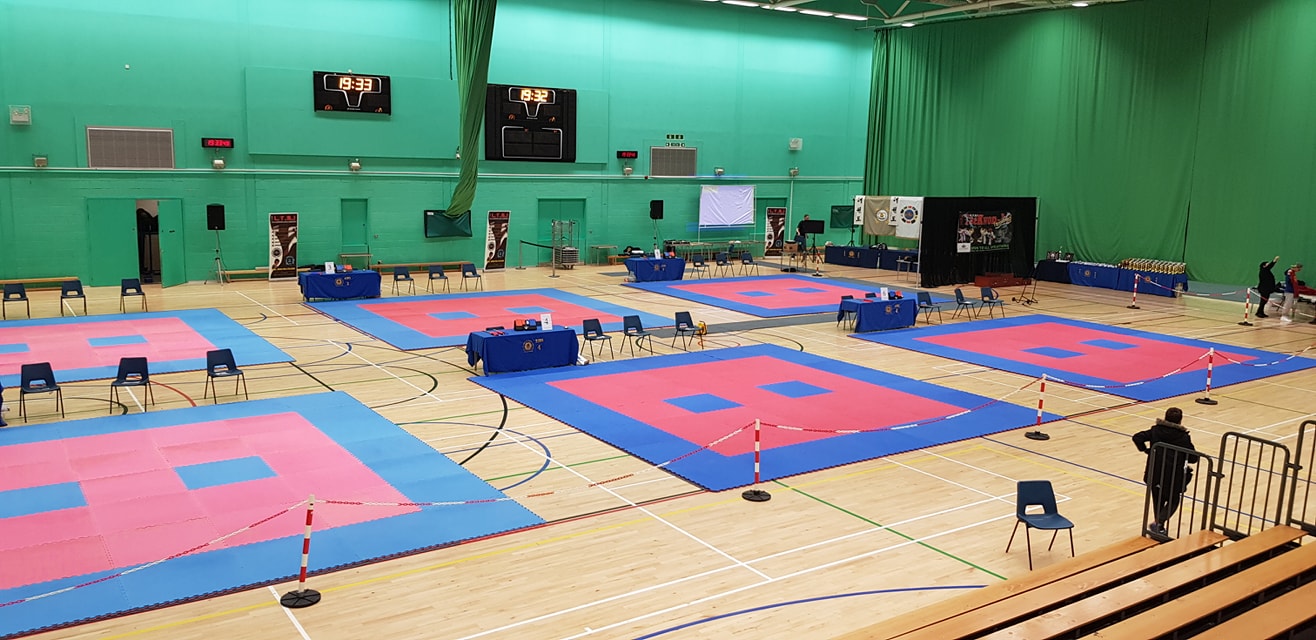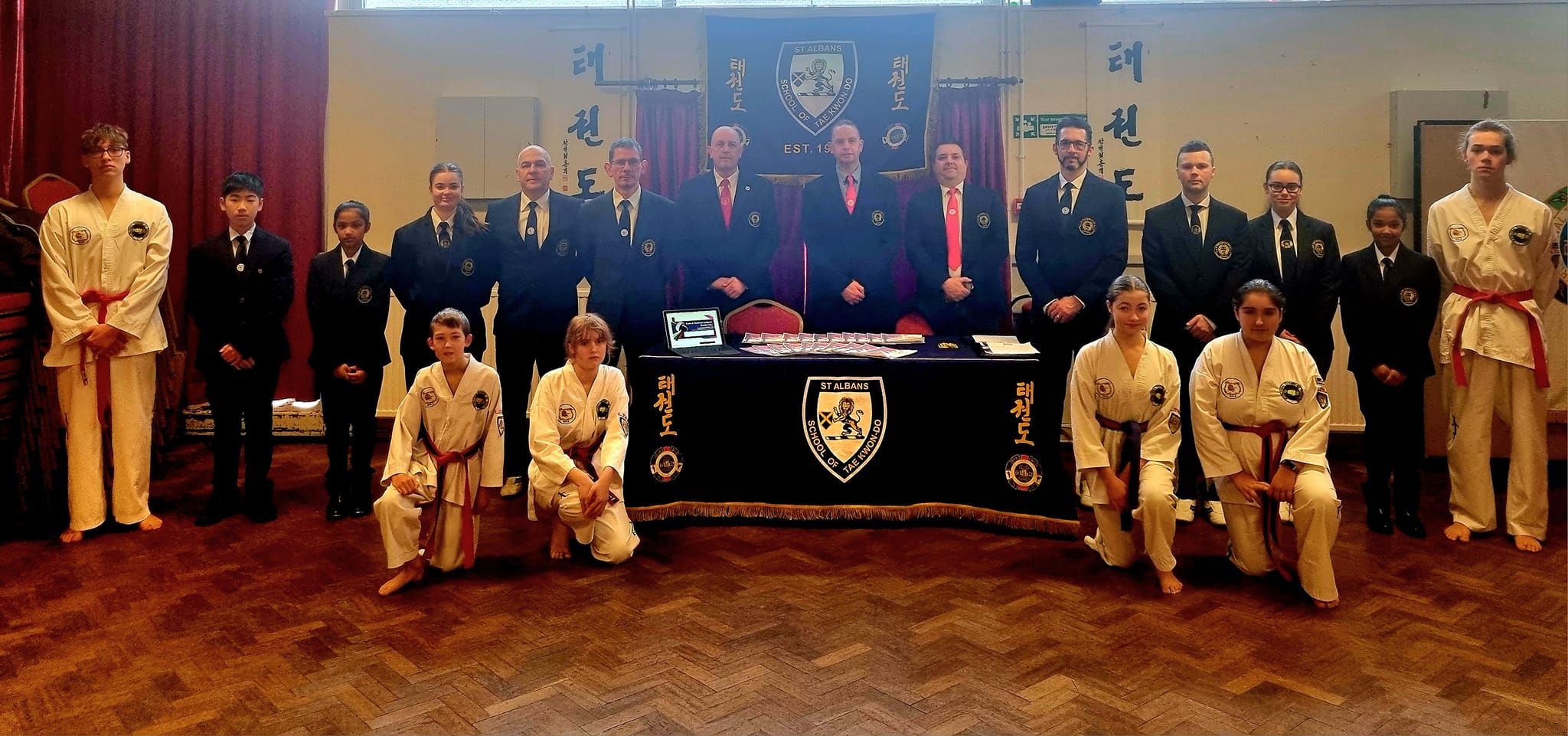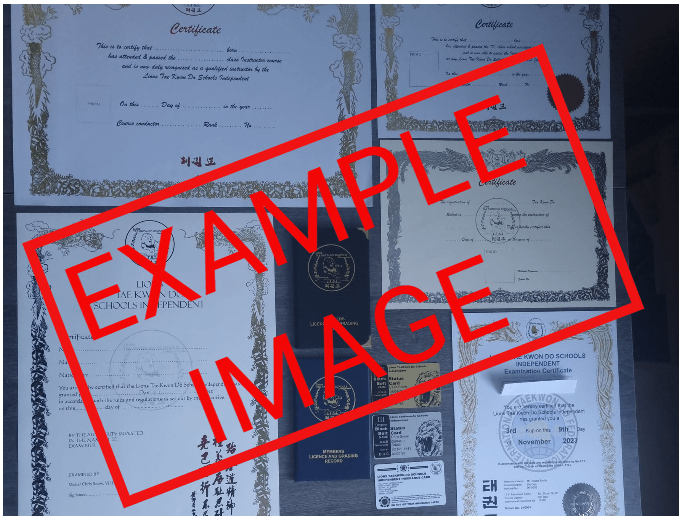Taekwondo Classes & Affiliation with the L.T.S.I.
L.T.S.I. Quality Taekwondo classes and event providers since 2004
Next major event
XI English TKD Opens
Day(s)
:
Hour(s)
:
Minute(s)
:
Second(s)

Value for money
Competitive pricing set across the board. The L.T.S.I. prides itself on providing the best at every level.
The key to quality
No compromise on quality training, with a syllabus admired by many worldwide.
24/7 Website Support
Training tips and videos on our site 24 hours a day to help you on your journey.
Multiple Locations
We have full time Instructors and affiliate schools with us. We also welcome all U.K. groups and schools into our family as of January 2024.
Patterns are fundemential movements set amoungst one or more imaginary opponents – These can be practiced in teams or alone, the practice of these enhance co’ordination, balance, technique but they also teach the student hidden deadly self defence combinations that can not be practiced against a ‘Live’ opponent.
1. Chon-Ji – 19 moves – learnt at 9th Kup
Chon-Ji literally means ‘Heaven and Earth’. It is, in the orient, interpreted as the creation of the world or the beginning of human history. Therefore, it is the initial pattern played by the beginner. This pattern consists of two similar parts: one to represent Heaven, the other the Earth.
2. Dan-Gun – 21 moves – learnt at 8th Kup
Dan-Gun is named after the Holy Dan-Gun, the legendary founder of Korea in the year 2333 B.C.
3. Do-San – 24 moves – learnt at 7th Kup
Do-San is the pseudonym of the patriot Ahn Chang-Ho (1876 to 1938), who devoted his entire life to furthering the education of Korea and its Independent Movement.
4. Won-Hyo – 28 moves – learnt at 6th Kup
Won-Hyo was the noted monk who introduced Buddhism to the Silla Dynasty in the year 686 AD
5. Yul-Gok – 38 moves – learnt at 5th Kup
Yul-Gok is the pseudonym of the great philosopher and scholar Yi I (1536 to 1584 AD) nicknamed the ‘Confucius of Korea’. The 38 movements refer to his birthplace on the 38o latitude and the diagram (±) represents the scholar.
6. Joong-Gun – 32 moves – learnt at 4th Kup
Joong-Gun is named after the patriot Ahn Joong-Gun who assassinated Hiro Bumi Ito, the first Japanese governor-general of Korea, known as the man who played the leading part in the Korea-Japan merger. The 32 movements of this pattern represent Mr Ahn’s age when he was executed in the Lui-Shung prison (1910)
7. Toi-Gye – 37 moves – learnt at 3rd Kup
Toi-Gye is the penname of the noted scholar Yi Hwang (16th Century AD), an authority on Neo-Confucianism. The 37 movements refer to his birthplace on the 37-degree latitude and the diagram (±) represents the scholar.
8. Hwa-Rang – 29 moves – learnt at 2nd Kup
Hwa-Rang is named after the Hwa-Rang youth group, which originated in the Silla Dynasty during the early 7th Century AD. This group eventually became the actual driving force towards the unification of the three kingdoms of Korea.
The 29 movements refer to the 29th Infantry Division, where Tae Kwon-Do developed into maturity.
9. Choong-Moo – 30 moves – learnt at 1st Kup
Choong-Moo was the given name of the great admiral Yi Sun-Sin of the Yi Dynasty. He was reputed to have invented the first armoured battleship, nicknamed Kobukson, which was the precursor to the present day submarine, in the year 1592 AD. The reason why this pattern ends with a left hand attack is to symbolise his regrettable death, having had no chance to show his unrestrained potentiality, checked by the forced reservation of his loyalty to his King.
Black Belt Patterns
10. Kwang-Gae – 39 moves – learnt at 1st Dan
Kwang-Gae is named after the famous Kwang-Gae-Toh-Wang, the 19th King of the Koguryo Dynasty who regained all of the lost territories including the greater part of Manchuria. The diagram (±) represents the expansion and recovery of lost territory. The 39 movements refer to the 1st two figures of 391 AD, the year he came to the throne.
11. Po-Eun – 36 moves – learnt at 1st Dan
Po-Eun is the pseudonym of the loyal subject Chong Mong-Chu (1400 AD) who was a famous poet and whose poem ‘I would not serve a second master though I may be crucified a hundred times’ is known to every Korean. He was also a pioneer in the field of physics. The diagram (?) represents his unerring loyalty to his King and country towards the end of the Koryo Dynasty.
12. Ge-Baek – 44 moves – learnt at 1st Dan
Ge-Baek is named after Ge-Baek, a great General in the Baek-Je Dynasty (660 AD). The diagram ( ? ) represents his severe and strict military discipline.
13. Eui-Am – 45 moves – learnt at 2nd Dan
Eui-Am is the pseudonym of Son Byong Hi, leader of the Korean independence movement on March 1, 1919. The 45 movements refer to his age when he changed the name of Dong Hak (Oriental culture) to Chondo Kyo (Heavenly way religion) in 1905. The diagram represents his Indomitable Spirit, displayed while dedicating himself to the prosperity of his nation.
14. Choong-Jang – 52 moves – learnt at 2nd Dan
Choong-Jang is the pseudonym given to General Kim Duk Ryang who lived during the Yi Dynasty, 16th century. This pattern ends with a left-hand attack to symbolize the tragedy of his death at 27 in prison before he was able to reach full maturity.
15. Juche – 45 moves – learnt at 2nd Dan
Juche is a philosophical idea that man is the master of everything and decides everything. In other words, the idea that man is the master of the world and his own destiny. It is said that this idea was rooted in Baekdu Mountain which symbolizes the spirit of the Korean people. The diagram represents Baekdu mountain.
16. Sam-Il – 33 moves – learnt at 3rd Dan
Sam-Il denotes the historical date of the independence movement of Korea which began throughout the country on March 1, 1919. The 33 movements in the pattern stand for the 33 patriots who planned the movement.
17. Yoo-Sin – 68 moves – learnt at 3rd Dan
Yoo-Sin is named after General Kim Yoo Sin, a commanding general during the Silla Dynasty. The 68 movements refer to the last two figures of 668 A.D., the year Korea was united. The ready posture signifies a sword drawn on the right rather than left side, symbolizing Yoo Sin’s mistake of following his Kings’ orders to fight with foreign forces against his own nation.
18. Choi-Yong – 46 moves – learnt at 3rd Dan
Choi-Yong is named after General Choi Yong, premier and commander in chief of the armed forces during the 14th century Koryo Dynasty. Choi Yong was greatly respected for his loyalty, patriotism, and humility. He was executed by his subordinate commanders headed by general Yi Sung Gae, who later became the first King of the Yi Dynasty.
19. Yong-Gae – 49 moves – learnt at 4th Dan
Yong-Gae is named after a famous general during the Koguryo Dynasty, Yon Gae Somoon. The 49 movements refer to the last two figures of 649 A.D., the year he forced the Tang Dynasty to quit Korea after destroying nearly 300,000 of their troops at Ansi Sung.
20. Ul-Ji – 42 moves – learnt at 4th Dan
Ul-Ji is named after general Ul-Ji Moon Dok who successfully defended Korea against a Tang’s invasion force of nearly one million soldiers led by Yang Je in 612 A.D. Ul-Ji employing hit and run guerilla tactics, was able to decimate a large percentage of the force. The diagram represents his surname. The 42 movements represent the author’s age when he designed the pattern.
21. Moon-Moo – 61 moves – learnt at 4th
Moon-Moo honours the 30th King of the Silla Dynasty. His body was buried near Dae Wang Am (Great King’s Rock). According to his will, the body was placed in the sea “where my soul shall forever defend my land against the Japanese.” It is said that the Sok Gul Am (Stone cave) was built to guard his tomb. The Sok Gul Am is a fine example of the culture of the Silla Dynasty. The 61 movements in this pattern symbolize the last two figures of 661 A.D. when Moon Moo came to the throne.
22. So-San – 72 moves – learnt at 5th Dan
So-San is the pseudonym of the great monk Choi Hyong Ung (1520-1604) during the Yi Dynasty. The 72 movements refer to his age when he organized a corps of monk soldiers with the assistance of his pupil Sa Myunh Dang. The monk soldiers helped repulse the Japanese pirates who overran most of the Korean peninsula in 1592.
23. Se-Jong – 24 moves – learnt at 5th Dan
Se-Jong is named after the greatest Korean King, Se-Jong, who invented the Korean alphabet in 1443, and was also a noted meteorologist. The diagram represents the king, while the 24 movements refer to the 24 letters of the Korean alphabet.
24. Tong-Il – 56 moves – learnt at 6th Dan
Tong-Il denotes the resolution of the unification of Korea which has been divided since 1945. The diagram symbolizes the homogenous race.
Content courtesy of http://truro-taekwondo.com
Why join or affiliate to the L.T.S.I.

Top class events / awards as standard
Since 2004, the L.T.S.I. has hosted events in the U.K. that facilitate I.T.F. and independents from all over the four nations. The events have rules that suit both sides, meaning our opens are the fairest on the market. Profit is not our goal, unity and networking is. The awards we offer are amongst the best around - FACT!
No compromise on standards or dress code
Dress code is one of our top priority. All our Black Belts are required to attend all events in full official attire as above. There is NO compromise on how we conduct ourselves.
Satisfaction Guaranteed
Quality across the board
Value for money always
Traditional values always
Fully insured schools of Martial Arts
All grades fully verified
Many events hosted yearly
Our next main event
We host a number of events every year, weather it is open Taekwon-do championships that are trusted and proven or have an interest in seminars and courses we have you covered. Our affiliates have 100% freedom and we never interfere.
We've got you covered all the way
Whether it's insurance, recognition in a national group or looking for international recognition under an ITF body, we can help. Join us as a fully fledged member, or just affiliate to us....the choice is 100% yours with no hard sell.
What do I need to do if I'm interested?
Simply fill in the online form. All enquiries are 100% confidential, so no bridges will be burnt. We tend to get back in touch after we have done some research on you - this usually takes about 24 hours.
What happens if I join as a full member then want affiliated membership?
We are not an organisation that rules on fear (you know, the ones that attack you just because you decide it's not for you). Let us know and that's it. To be honest, we often say affiliation is best, then go full member after if you like. Again, there's no pressure.
Can I keep my own identity?
If you join fully, you gain many benefits, but it means using our suits etc. If you take affiliation, nothing changes and you can get access to everything we use at cost. We don't control anyone - all we ask is you follow correct timelines on exams and never put our group into disrepute online.
Can I grade my own students?
The rules are set by ITF Union for all full members and affiliates -
- Only 4th Degrees that have been on IIC's can examine members
- 4th and 5th Degree can grade up to 2nd Degree
- 6th Degree can grade up to 3rd Degree
- 7th Degree can grade up to 5th Degree
- 8th Degree can grade up to 7th Degree (7th is by permission of ITFU Promotion committee)
When you join, we will request proof of your promotions unless we know you already.
Do you have a constitution?
The L.T.S.I. sees constitutions as a way to enforce rules set by the organisation. We have a very basic Charter that works. No Board of Control, just an administration that looks after daily activities.
Full benefit information is only available to full members.
Our club was a full member of the L.T.S.I. in the start. We left to be part of another ITF body and chose to come back. We are now affiliated - no fuss, no pressure. We enter their events and love them. Highly recommended by Berkhamstead TKD
I've been a student of Master Snow's since 1996. I choose full membership as it works for my clubs and I have no interest in the politics, No stress, no pressure. The administration is on point and events are pretty classy.
We were affiliated to the L.T.S.I. for a number of years and never had any issues. Sadly, after Covid-19 my clubs folded, but I can verify their admin is pretty top notch. It's worth a punt if you want freedom.
Seminars with World class Masters and Grandmasters
The L.T.S.I. is led by Master Snow, 8th Degree
Despite our group head having one of the highest level degree belts in Taekwondo, we have a philosophy to provide the best Masters around for a given field. Whether it's sparring, patterns or technical, you can be sure the L.T.S.I. will always give you the best money can buy and make it competitive.
Grandmasters of the highest creed
We know our limits - getting a Grandmaster in from a reputable organisation gives our membership and attendees the best low cost experience money can buy.





